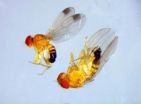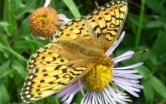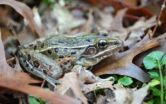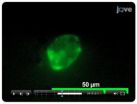(Press-News.org) New biotechnological and chemical methods will facilitate efficient production of chemicals, materials and fuels from renewable natural resources. The Academy of Finland Centre of Excellence (CoE) in White Biotechnology – Green Chemistry Research focuses on the research and development of microbial cells, or cell factories, for producing new useful compounds from sugars in plant biomass. These compounds can be used, for example, for manufacturing bioplastics or in medical applications.
"By means of gene technology, we can modify microbial metabolism and thereby produce organic acids for a wide range of industrial applications. They can be used, among other things, for manufacturing new plastic and textile materials, or packaging technologies," explains Merja Penttilä, Research Professor and Director of the Centre of Excellence from VTT Technical Research Centre of Finland.
New methods play a key role when various industries are developing environmentally friendly and energy-efficient production processes. Use of renewable natural resources, such as agricultural or industrial waste materials, to replace oil-based raw materials will make industries less dependent of fossil raw materials and, consequently, reduce carbon dioxide emissions into the atmosphere.
The CoE also develops highly sensitive measuring methods and investigates microbial cell functions at molecular level. "We need this information to be able to develop efficient bioprocesses for the future. For instance, we build up new micro- and nanoscale instruments for measuring and controlling microbial productivity in bioreactors during production."
Alternatives for oil
The metabolism of microbes is modified so that they will convert plant biomass sugars into sugar acids and their derivatives. These compounds can potentially serve as raw materials for new types of polyesters, whose properties – such as water solubility and extremely rapid degradation into natural substances – can be used, for example, in medicine. By modifying sugar acids, it is also possible to produce compounds that may replace oil-based aromatic acids in the manufacture of thermosetting plastics and textiles.
"Sugar acids can be used to produce biodegradable technical plastics, including polyamides, or functional components that increase the ability of cellulose to absorb water. Novel materials could replace the currently available non-biodegradable absorbent components in hygiene products. Sugar acids are also a source of hydroxy acids, such as glycolic acid, whose oxygen-barrier properties make it suitable for food packaging," explains Professor Ali Harlin, the head of the CoE Green Chemistry team.
In order to be able to replace, in the future, industrial production that is based on petrochemicals with new production processes based on waste biomass, such new processes must be extremely efficient. "A major challenge is how make the production organisms used in bioprocesses, that is, the microbes, to utilise the sugars of the biomass and to convert them into desired compounds in the most effective manner. This development work calls for multidisciplinary competence ranging from biosciences to engineering."
INFORMATION:
More information
Research Professor Merja Penttilä, VTT Technical Research Centre of Finland, tel. +358 40 7000 163, merja.penttila(at)vtt.fi
Academy of Finland
Communications Manager Riitta Tirronen
tel. +358 9 7748 8369, riitta.tirronen(at)aka.fi
END
Coming from the Asian continent, Drosophila suzukii has only been in Spain for a short time. Far away from slipping through into the Iberian Peninsula, it accelerated towards the north of Europe where it has already crossed the Alps. Amongst its preferred target are cherries and red fruits but any type of fruit is suitable for it to lay its eggs. This insect is posing a threat to the fruit of more and more European countries.
"Out of the 3,000 known species of Drosophilae, commonly named the vinegar fly, only two are potentially dangerous to fruit crops. One of them is ...
Have you ever wondered how life is sustained in environments like deserts, deep seas or the polar regions? How do organisms adapt and thrive in such harsh conditions, and what challenges do they face as a result of human activities and climate change, especially climate "extremization"? Shedding light on some of these issues is the objective of the European Science Foundation's (ESF) session on 27 March at Planet Under Pressure 2012. The session will look at different aspects of life in extreme environments - from knowledge to sustainable exploitation of new resources under ...
Montreal, March 16, 2012 – A clinical study co-led by the Montreal Heart Institute and Innovaderm Research Inc., which was presented today at the annual meeting of the American Academy of Dermatology, shows that a new treatment for psoriasis could be associated with a significant decrease in vascular inflammation, a major risk factor of cardiovascular disease.
Psoriasis is a chronic inflammatory disease of the skin and joints that affects up to 3% of the population. This disease is associated with a greater risk of heart attack (infarction) and stroke. The goal of this ...
Early snowmelt caused by climate change in the Colorado Rocky Mountains snowballs into two chains of events: a decrease in the number of flowers, which, in turn, decreases available nectar. The result is decline in a population of the Mormon Fritillary butterfly, Speyeria mormonia.
Using long-term data on date of snowmelt, butterfly population sizes and flower numbers at the Rocky Mountain Biological Laboratory, Carol Boggs, a biologist at Stanford University, and colleagues uncovered multiple effects of early snowmelt on the growth rate of an insect population.
"Predicting ...
In the wilds of New York City--or as wild as you can get that close to skyscrapers--scientists have found a new leopard frog species.
For years, biologists mistook it for a more widespread variety of leopard frog.
While biologists regularly discover new species in remote rainforests, finding this one in ponds and marshes--sometimes within view of the Statue of Liberty--is a big surprise, said scientists from the University of California, Los Angeles; Rutgers University; the University of California, Davis and the University of Alabama.
"For a new species to go unrecognized ...
You've been feeling under the weather. You Google your symptoms. A half-hour later, you're convinced it's nothing serious—or afraid you have cancer. More than 60 percent of Americans get their health information online, and a majority of those decide whether to see a doctor based on what they find. "Wow, this is an era of self-diagnosis," thought Arizona State University psychologist Virginia Kwan, learning that statistic. How might information accessed online affect individual health decisions?
In a new study, Kwan and her colleagues found that the way information is ...
TORONTO, ON—Scientists at the University of Toronto have found a molecular mechanism that plays a key role in the transition of Candida albicans yeast into disease-causing fungus—one of the leading causes of hospital-acquired infection. The finding highlights the importance of heat in fungal growth, and provides a new target for drug therapies to counter Candida albicans infection.
Candida albicans is a normally harmless yeast that is present in all humans. It becomes infectious in various genetic and environmental conditions, with temperature as a key determinant. It ...
NEW YORK (March 16, 2012)—A rapid increase in shipping in the formerly ice-choked waterways of the Arctic poses a significant increase in risk to the region's marine mammals and the local communities that rely on them for food security and cultural identity, according to an Alaska Native groups and the Wildlife Conservation Society who convened at a recent workshop.
The workshop—which ran from March 12-14—examined the potential impacts to the region's wildlife and highlighted priorities for future management of shipping in the region. The meeting included participants ...
Glacial meltwater increases biodiversity in mountainous freshwater ecosystems. As glaciers vanish due to global warming, so will those species dependent upon the icy runoff. This is the conclusion of a study authored by researchers from, among other institutions, the University of Copenhagen.
The article "Glacial river biodiversity" with the alarming new findings can be found in the journal Nature Climate Change.
"The knowledge is new and startling. Glacial runoff is cold, nutrient-poor and physically unstable, and therefore, typically species-poor. Traditionally, we ...
Researchers from Clemson University have found a way to create temporary holes in the membranes of live cells using a standard inkjet printer. The method will be published in JoVE, the Journal of Visualized Experiments, on March 16.
"We first had the idea for this method when we wanted to be able to visualize changes in the cytoskeleton arrangement due to applied forces on cells," said paper-author Dr. Delphine Dean.
She said other researchers have been using this method to print cells onto slides, but that they have only recently discovered that printing the cells ...




